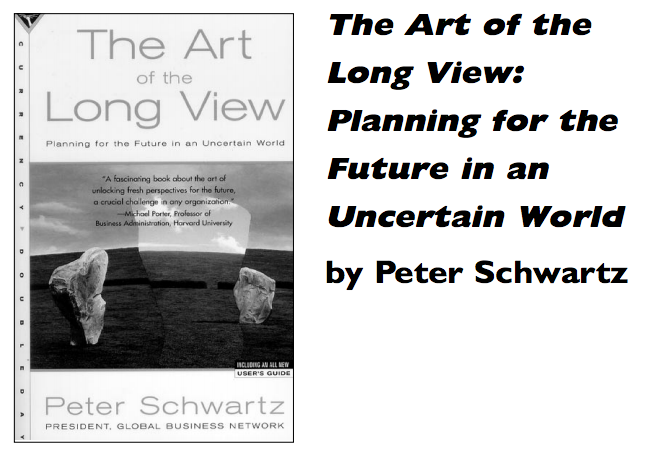
Some books have lengthy lives—a measure perhaps of how much they touch their times. Peter Schwartz’s The Art of the Long View: Planning for the Future in an Uncertain World (current version by Currency/ Doubleday, 1996) is one of them. Five years after its original publication, the book continues to pop up— deservedly—on business best-seller lists.
Schwartz earns his living building “scenarios” for organizations. Scenario builders combine the known forces already at work (demographics, technology, cultural change) with other—less certain—elements to create scenario plots, alternative descriptions of the future. Armed with the most likely maps, the theory goes, we can test out strategies and decisions against different futures, and know where to look for the signals of change.
The Future in the Nile
Schwartz uses a fascinating story from ancient Egypt to illustrate the idea of scenarios. In the time of the Pharaohs, the most important event in Egypt was the annual flooding of the Nile and its rich agricultural basin. The Nile is born out of the flow of three upstream tributaries—the Blue Nile, the White Nile, and the Atbara. Each year, the level of flooding was determined by which of these rivers had received the most rainfall and therefore dominated the downstream flow.
If the Nile was dominated by the clear waters of the White Nile, the flood would be mild and late, and the crops would be poor. If the river appeared dark from the flow of the Blue Nile, the flooding would produce a bountiful harvest. If the greenbrown waters of the Atbara prevailed, the flooding would be catastrophically high. Each spring, the temple priests would gather upstream, check the color of the water, and report to the Pharaoh on the flooding to follow.
Every set of scenarios contains driving forces. In this case, it was the rainfall on the headwaters of the Nile. The unknown but crucial element was the rainfall’s distribution. Where the rains fell heaviest that year would determine crop yields, grain stores, taxation, public works programs, even plans for war. The sign of the future was the color of the water in springtime in the Sudan.
When we presume a predetermined outcome, we fail to test strategies and decisions against other possibilities.
Like modern-day leaders, the Pharaohs faced uncertain futures. Royal planning that failed to account for all the scenarios would have opened them to catastrophe. Schwartz’s point is that too often organizations plan to what he calls “their Official Future”—the most likely scenario, or the one the organization desires the most. When we presume a predetermined outcome, we fail to test strategies and decisions against other possibilities. And we fail to look for the signs that might speak of a different future.
Gorbachev’s Rise—and Shell’s Potential Fall
Schwartz points to a case in his own career in planning at Shell Oil. His team was asked to develop scenarios in which the price of natural gas might fall. The biggest potential market influences were the vast gas reserves of the Soviet Union, which, as part of longstanding Soviet policy, had never been fully opened to the free market.
After intense research into possible sources of change in Russia, Schwartz’s team identified a few obscure politicians, any of whose rise to power would likely signal a new era of economic cooperation with the West. One of those they identified was Mikhail Gorbachev. When Gorbachev began his ascent, Shell took it as a sign of changes to come and saved themselves from disastrous investment decisions.
Scenario-planning is not just for big business. Peter Schwartz and Paul Hawken used scenario-planning to help assess the viability of starting a mail-order company specializing in high-quality imported garden tools. When all the probable scenarios— from economic recession to boom— showed a profitable niche for such an enterprise, the soon-to-be highly successful Smith & Hawken mail-order company was launched.
The book includes a user’s guide that makes scenario-planning accessible. Best of all, it reads like a summer novel. Anyone interested in their business’s future should take a long look at The Art of the Long View.
Terry O’Keefe is a business writer from Oakland, CA. His book reviews appear in business publications around the country.
